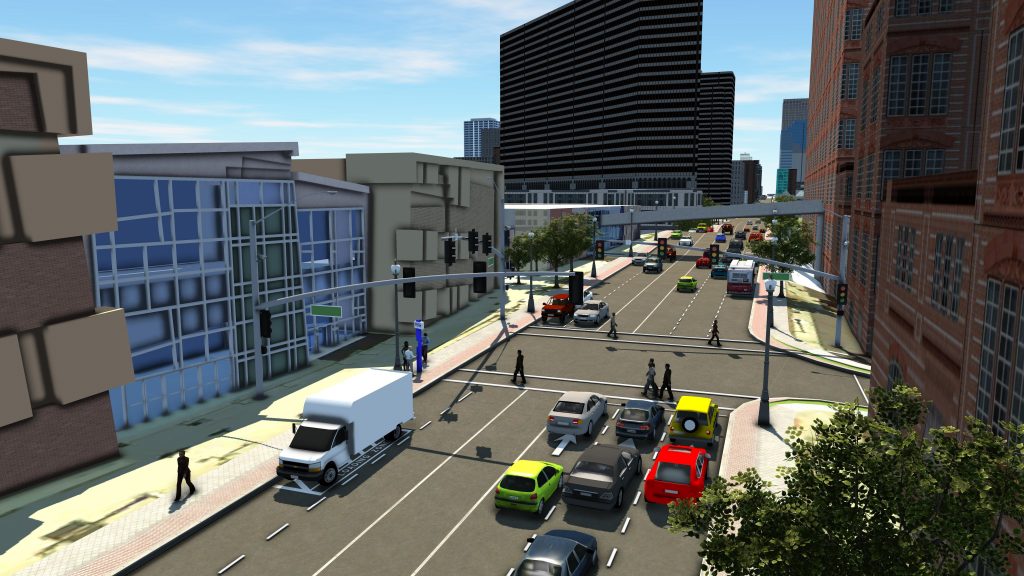Share
Columbus’ Smart City Vision Began with an Autodesk Visualization
Drum roll, please. Introducing the winner of the first U.S. Department of Transportation Smart City Challenge: Columbus, Ohio. As proud sponsors of U.S. Transportation Secretary Anthony Foxx’s visionary Smart City Challenge, Autodesk congratulates the residents and leadership of the City of Columbus.
At Autodesk, we think the city and residents of Columbus always knew they could win – and they did win. The level of engagement between Autodesk and Columbus’ technical team was extraordinary. The team was proactive in learning, understanding, and eager to put their best proverbial foot forward. Buckeye State, we are proud to have supported the development of your vision for the future – lifting the printed words from your application and turning them into an informed design to be shared visually. Because, when it comes to the smart city of the future, a true vision begins with visualization.
 Image of downtown Columbus, Ohio created using Autodesk InfraWorks 360 and Autodesk 3ds Max. Image courtesy of U.S. DOT Smart City Challenge/City of Columbus (HNTB).
Image of downtown Columbus, Ohio created using Autodesk InfraWorks 360 and Autodesk 3ds Max. Image courtesy of U.S. DOT Smart City Challenge/City of Columbus (HNTB).
Featured below are two of the set of proof-of-concept animations the City of Columbus used to illustrate their vision of increased use of driver-less vehicles, with the ability to communicate via sensors with traffic signals and other transportation infrastructure. The animations were created using Autodesk InfraWorks 360, and are courtesy of the City of Columbus.
Columbus, Ohio. The underdog? The city that beat out known tech hubs San Francisco and Austin? We don’t think Columbus would ever want to be called the outlier, the underdog, or the long shot. Nope, Columbus is proud of its world-class colleges and universities, its medical facilities, its growing technology corridor, and revitalized downtown. With a population around 800,000, Columbus is in the same ballpark as San Francisco and Austin – and surpasses Washington, DC and Boston in population. Columbus is no shrinking violet. But Columbus proves something important – any city can do this if you pull together a team of committed leaders, the public and the private sectors.
But while Columbus may have been declared the Smart City Challenge champion there really are no second finishes among the six other finalists. As sponsors, we were proud to support San Francisco; Kansas City, MO; Austin, Texas; Denver; Portland, OR; and Pittsburgh. And, we pledge our continued support to bring their individual visions to reality.
Each of these six finalists and Columbus shared a goal: improving the quality of life for their respective citizens. The cities presented their plans to connect people and places and to bring goods to and through their cities. The cities shared a common vision too – to make their cities a healthier, more prosperous place to live and do business through connected transportation. Because, at its core, if your residents can’t easily get to a doctor, to school, to shop for groceries, the city can’t survive and thrive.
But that’s where our technology comes into play. Sketching out a plan – that’s not a hard thing to do. The bigger challenge is the demonstration of a vision in the context of the real world. Data and a modeling tool that lets planners make informed choices and make changes on the fly – that’s the goal. And that’s Autodesk InfraWorks 360.
As the challenges facing our cities continue to grow – population shifts towards cities, not away; infrastructure continues to age and crumble; more teens rejecting driving cars for public transportation and on demand services like Uber, Lyft and Bridj; and with people living much longer than before and aging in place where transportation must be affordable and available – planners need tools to make informed decisions able to incorporate and demonstrate choice.
Thank you to Transportation Secretary Anthony Foxx for his leadership. The fact is he did something too often considered taboo – he created a partnership between the public and private sectors. You see, there are too many challenges facing our nation’s infrastructure and so many opportunities. The truth is, neither the public nor private sectors can address those challenges on their own.
Through collaboration and discussion, through sharing and a robust exchange of ideas – we can deliver results together. So, let’s begin the real collaboration of not just getting Columbus connected, let’s make sure that all seven finalist cities can carry out their vision. Autodesk remains committed.